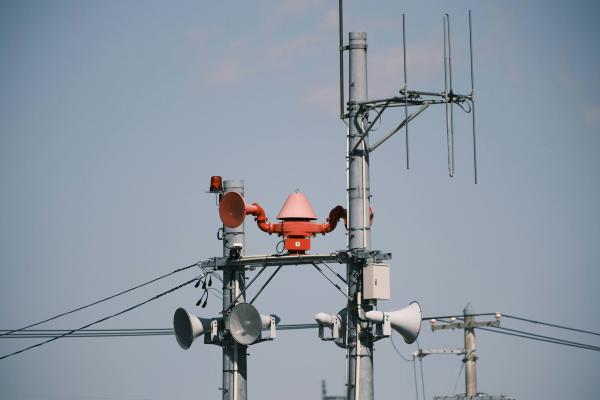As the world moves on from the pandemic, you would hope that life would become easier. Along with worries about energy supply and inflation brought about by the conflict in Ukraine, the pandemic has thrown up real issues around future supply of materials that we’re all going to need in the fight against climate change, and real concerns around what it may mean if demand cannot be met.
‘White gold’ is the term used to describe lithium. It is a soft silvery-white alkali metal and is the lightest of all metals. It is not found as a free element in nature but is found in small amounts in rock and, therefore, needs to be mined.
The problem with Critical Raw Materials
The lithium-ion battery is what is used to power modern electric vehicles. As economies pick up coming out of the pandemic concurrent with a push to move away from fossil fuels and the combustion engine, the demand for lithium has shot up. Production volumes of lithium have trebled since 2015. They are expected to increase seven-fold by 2030 and by as much as 35 times by 2050.
Supply will have to meet demand or will lead to a failure of one of the main sustainable transport actions in any climate change mitigation strategy worldwide. But this supply is beset with risk. This does not only apply to lithium but to many other raw materials which are critical to modern technology and/or clean technologies that are essential in aiding climate mitigation. The European Commission is so worried about this that they maintain a list of Critical Raw Materials or CRMs of high importance to the EU economy and with high risk associated with their supply. Lithium was added to the list in 2020.
Electric vehicle batteries are known as lithium-ion but actually use a variety of metals including lithium, cobalt, copper, iron, and aluminium. If we are to manufacture the numbers of electric vehicles that we hope to, then we are going to need a reliable and increasing supply of all these metals for many years.
Lithium is only mined and refined at any scale in five countries, and 90% of electric cars use lithium from these. Around 20% of it comes from Australia with around the same from China. The bulk of it – around 60%, comes from South America, particularly Chile. China refines much of the world’s lithium ore.
Securing the materials needed for renewable growth
So concerned are European countries about future supplies that many have started to explore supplies much closer to home, and are undertaking surveys to identify reserves that could be mined in Europe. Finland for example, hopes to open a small mining site north of Helsinki in 2024. Sites have also been identified in France, Serbia, and Portugal. All European sites, however, appear to have the same two difficulties:
One is that the scale of supply is comparatively small. Investors will only see the large-scale operations in Australia or South America as being attractive. This leaves some European mines at risk of being economically unviable.
The second difficulty is that few people in Europe wish to have a mine on their doorstep. This has already led to plans for lithium mining in some parts of Serbia and France being shelved. The irony of concerns around local environments limiting the supply of critical material needed to bring about climate mitigation measures isn’t lost. But the mines produce a high volume of waste and raise concerns about pollution including to local waters. Complying with European planning regulation adds further difficulty to any proposed development. In Portugal there have been protests against plans for lithium mines in the north of the country. Portugal has one of Europe’s lowest income economies, and, with the price of lithium rising there will be increasing pressure on the Portuguese government to exploit what could be an extremely valuable resource for the country.
Two solutions are proposed to try to help with supply to Europe. Firstly, is a proposal to open refineries in Europe so that worries about heavy reliance on China for refining are reduced. The second option is to recycle the lithium metal from old batteries. This is not a current option but, over time, as today’s electric vehicle batteries reach the end of their life, recycling of the metal will need to be applied on a large scale to manage future demand and reduce environmental impact. The planning for this needs to commence now, though.
Other CRMs that will need careful consideration in the future include cobalt. Around 70% of the world’s supply comes from the Democratic Republic of Congo and is shipped out via South Africa. It is essential not only for electric vehicles but also for mobile telephone technology. The fear in use of critical resources in any low-income economy is exploitation due to poor regulation. This raises not only the potential for damage from environmental pollution, but also human rights issues.
The reliance on a single country, no matter where in the world, for much of any critical raw material is always a concern. The recent example of reliance on Russian gas by much of Europe is testimony to that. But there are other possible negatives; China for example, produced 80% of the world’s neodymium in 2017. Neodymium is used in magnets and in generators for wind turbines. Should China determine it wishes to increase its own wind generation capability in the future, then it would undoubtedly choose to retain more of its own neodymium and export less, having real impacts on other countries’ renewable energy capabilities.
Clearly, the world is moving into an era of lower carbon usage, and we should continue to do all we can to encourage and assist this. However, the technology associated with the transition is going to require the raw material to make it happen, and the world still must address the resilience of these supply chains.



